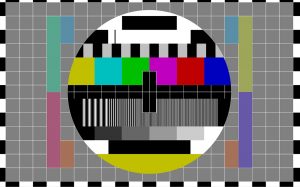Save the cat, why?

WHY SAVE THE CAT. IT CAN BE BAD
Save the cat appears to be the one book that so many people wanting to learn screenwriting gravitate towards. Why?
Save the cat promises success.
Save the cat and other books of its ilk tell the reader that if you follow their rules you will be successful. They will always have a disclaimer of some kind. But it will be the kind of disclaimer that a hopeful reader will quickly dismiss.
The difference between tools and rules.
A tool is something that can be used to accomplish a job. This job can be anything that can be impacted by the tool. A hammer can be used to drive a nail into a piece of wood, bend steel or check that the pope is dead (Google it).
A rule is not something that is utilised by the user at the user’s discretion. It is a way of constraining or limiting the behaviour of something or someone. It is the exact opposite of freedom.
Some people will tell you that your true skill is shown by writing a compelling story within the limitation. Bullshit. That producers are looking for writers that can write within these guidelines. Bullshit.
Why am I picking on Save the Cat?
I am not specifically picking on this book. It is the most common book suggested. So it seemed the most sensible book to mention as most people will have heard of it. The title comes from the notion that you can have a bad character. As long as you show them “saving a cat” to make the audience like them. Again Bullshit. Audiences are capable of following a story and being challenged by people they don’t like.
The power of unlikeable characters.
For a character to feel real they must be relatable, not just likeable. If you can understand why they are doing it. Then you can relate. Not agree, or like. But relate. Thanos in the Marvel series. Thanos takes Gamora into his family saving her from his own slaughter. He saves her, just like a cat. Do we like him? Is he suddenly a likeable character? I would say no. But we can relate to him. In his own twisted logic. Killing half the universe guarantees the safety of the remaining half. Insane logic, but I can see how someone may follow that to a conclusion.
What about structure.
This word has been hijacked by the screenwriting gurus. A story does need some form of structure. The structure needs to be consistent during the story so the audience can follow it. An audience will subconsciously see the structure of the film, its rhythm. You can change it, for sure. But if you have something that the audience can follow, something that they can rely on, it makes the story easier to understand.
A story can be compelling in whatever form and structure the writer chooses. A short story, a poem, a birthday card all convey a message. These do not have to have a particular event happen at a particular place in the writing. Neither does a screenplay.
This was never more obvious to me than when I was listening to a podcast dedicated to Save the Cat. When I first started learning I was listening to everything (this is what the gurus are hoping for and relying on). There was a huge debate raging about some special event that is supposed to happen on page 75. No one on the panel could agree what this special event was. Perhaps it happened a page earlier. This told me, they were bending the truth to fit their narrative.
Examples of Tools, not rules.
A tool is an Empathy Matrix. You fill out an empathy matrix and you will understand your character. Understanding the character enables to you make the right decision for your story.
A treatment is a tool. Writing your story in prose form can help you see holes or where you can advance the story.
I think a tool is anything that can be used regardless of the story. The tool may even be external to the story. It is not a framework or beat sheet. A tool is for the writer use, not to dictate the work.





